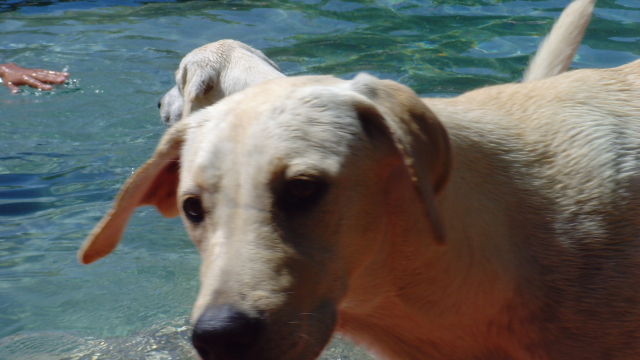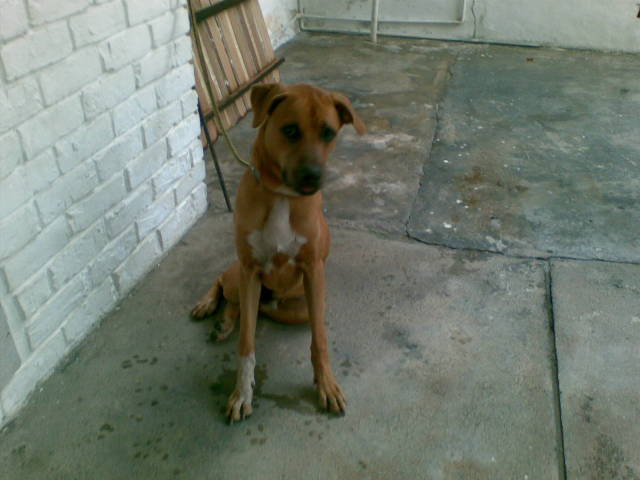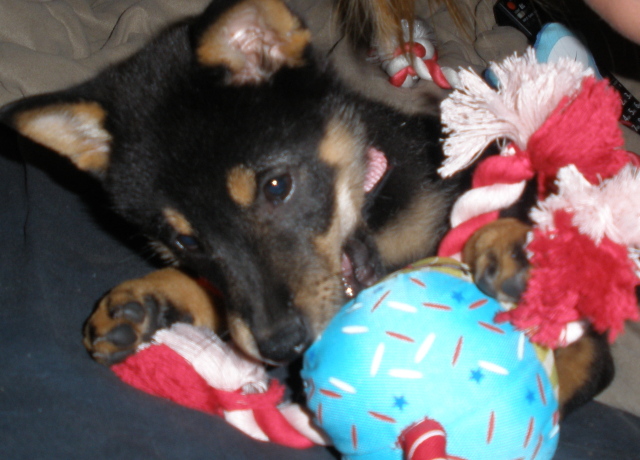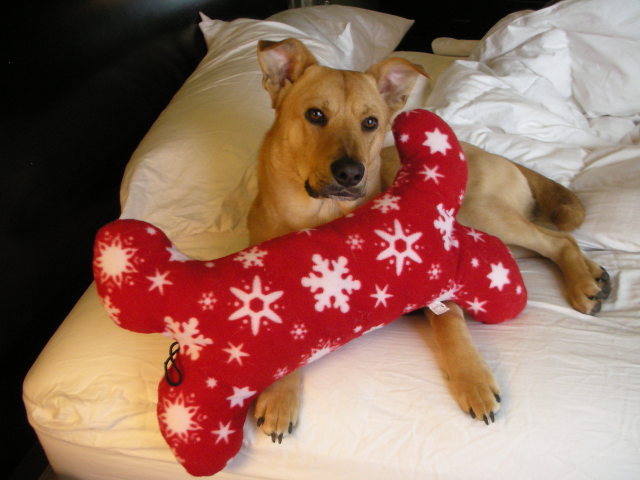Question A friend of mine moved in with my family 2 weeks ago with her 4 year old male (unfixed due to the fact he is used as a sire) dachshund. We have a 13 year old neutered lab mix and a 4 year old spayed lab. The dachshund was immediately more fond of(trying to hump and following) the old male lab mix and seems to completely ignore the female but lately he has been so overprotective he will bite anyone who attempts to go near the other male. He is not aggressive to the female but is aggressive to people. What can we do to stop this behavior and why does he do it.
AnswerThis dog was not following the Lab and humping him because he is "bonded" to him or "fond" of him: this is a rank behavior (humping is not sexual, it is dominance related.) He is not being "overprotective" of the Lab, he is displaying rank related behavior and "splitting" (with aggression) anyone who "dares" to show any attention to the Lab. He is NOT "ignoring" the female, he is behaving appropriately (and she is most likely doing the same toward him.) It's totally unreasonable to expect any professional to be able to address this dog's problem behaviors IN A TEXT BOX, having given such scant information; if the dog is actively aggressive toward humans, you need in-person evaluation of his temperament, in depth interview of the owner and other members of the household, observation of the dog with the other two dogs, and expert advice on how to demote your entire "pack", put this Doxie on a Nothing in Life Is Free behavior modification protocol to reduce his active aggression, institute positive reinforcement training and learn how to observe dog body language in order to immediately perceive intentions among dogs and behaviors of this dog toward humans, interrupt unwanted behaviors, and get control of this situation. NO ONE CAN DO THIS FOR YOU IN A TEXT BOX. Call the veterinary college in your geographical area and ask for referral to a certified applied animal behaviorist.

 agressive silky terrier
Question
Lucas 1 year old
Hi Jennifer:
I have a
agressive silky terrier
Question
Lucas 1 year old
Hi Jennifer:
I have a
 Psychological trauma
Question
Izzy
I recently took my 1 year old dog to a fr
Psychological trauma
Question
Izzy
I recently took my 1 year old dog to a fr
 dogs behaviour
QuestionMy 8 months old Dusto
QUESTION: My puppy
dogs behaviour
QuestionMy 8 months old Dusto
QUESTION: My puppy
 My Shiba Inu
Question
Lola
I bought a registered Shiba Inu puppy fro
My Shiba Inu
Question
Lola
I bought a registered Shiba Inu puppy fro
 Very Scared Dog
Question
Happy
My dog is 17 months old and is a mixed b
Very Scared Dog
Question
Happy
My dog is 17 months old and is a mixed b